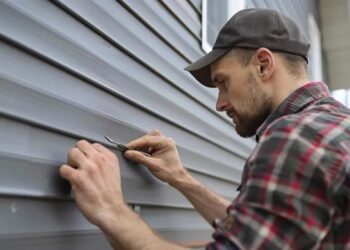Exploring the signs indicating it's time to replace your roof or siding opens up a world of maintenance insights. From subtle clues to glaring issues, this guide delves into the nuances of home exterior upkeep, promising a journey of discovery and practical advice.
Delve into the realm of roof and siding replacement, where proactive measures can save you from costly repairs and enhance your property's curb appeal.
Signs It’s Time to Replace Your Roof
Replacing your roof is a significant investment, but it's crucial to ensure the safety and integrity of your home. Here are some common signs that indicate it's time for a replacement:
Common Signs of Roof Damage
- Missing or broken shingles
- Leaks or water stains on the ceiling
- Sagging or uneven roof lines
- Moss or algae growth
- Excessive granules in the gutters
Regular roof inspections are essential in identifying these issues early before they escalate into more significant problems. By catching problems sooner, you can save money on repairs and prevent potential water damage to your home.
Importance of Regular Roof Inspections
- Helps to detect damage early
- Extends the lifespan of your roof
- Prevents costly repairs
- Ensures the safety of your home
How Age and Wear Affect the Condition of a Roof
As your roof ages, it becomes more susceptible to damage from weather elements such as rain, snow, and UV rays. Over time, shingles may become brittle, crack, or lose their protective granules, leading to leaks and other issues. Regular wear and tear can weaken the structure of the roof, making it less effective in protecting your home from the elements.
Signs It’s Time to Replace Your Siding
When it comes to your home's exterior, the siding plays a crucial role in protecting it from the elements. Over time, siding can wear out and show signs of damage that indicate it's time for a replacement. Here are some key indicators that you should look out for:
Visible Signs of Siding Damage
1. Cracks or holes: If you notice cracks or holes in your siding, it's a clear sign that it's no longer providing adequate protection for your home.
2. Warping or buckling: Siding that is warped or buckled can allow moisture to seep in, leading to potential water damage and mold growth.
3. Fading or discoloration: Over time, siding can fade or become discolored due to sun exposure, indicating that it may be time for a fresh update.
Impact of Weather Conditions
- Extreme temperatures: Fluctuations in temperature can cause siding to expand and contract, leading to cracks and other damage over time.
- Heavy rain or snow: Excessive moisture can seep into siding, causing it to deteriorate and potentially rot.
- High winds: Strong winds can loosen or even rip off siding, leaving your home vulnerable to further damage.
Comparison of Siding Materials
| Siding Material | Durability |
|---|---|
| Vinyl | Durable and low maintenance, but can crack in extreme cold. |
| Wood | Natural and aesthetic, but requires regular maintenance to prevent rot and insect damage. |
| Fiber Cement | Durable and resistant to rot and insects, but heavier and more expensive. |
Conclusion

In conclusion, being attuned to the signs signaling roof or siding replacement can safeguard your home's structural integrity and elevate its overall aesthetics. Stay informed, stay proactive, and ensure your abode remains a sanctuary of comfort and style.
FAQ Compilation
What are the common signs of roof damage that indicate it's time for a replacement?
Common signs include missing shingles, water stains on the ceiling, and sagging roof lines.
How do weather conditions affect siding deterioration?
Extreme heat or cold can cause siding to warp, crack, or fade, accelerating its wear and tear.
Which siding material is most durable over time?
Fiber cement siding is known for its longevity and resistance to rot, insects, and harsh weather conditions.














